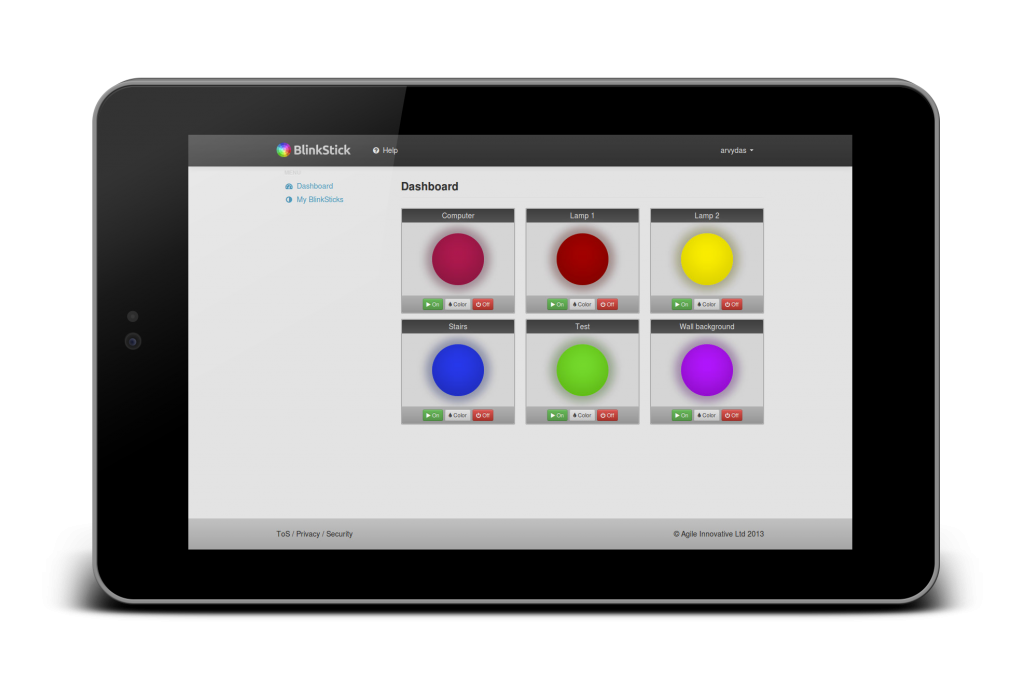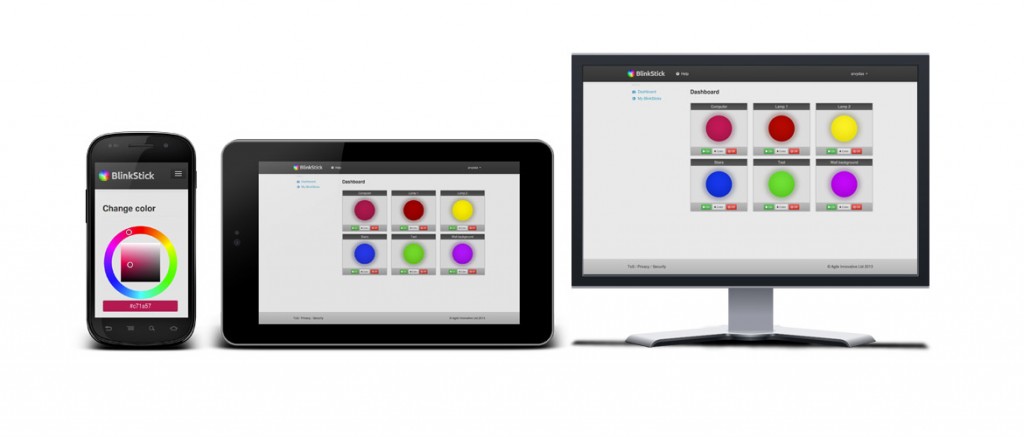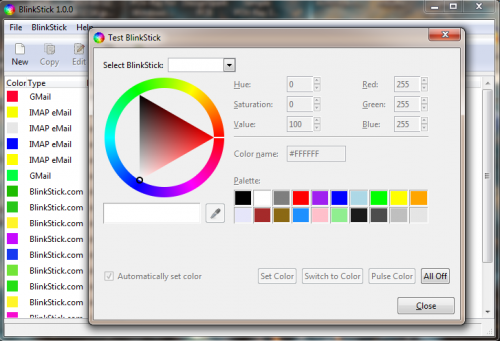Check out this great BlinkStick review by Anthony Di Iorio! Thanks Anthony for taking your time to do the review, I’m really happy to hear you enjoyed building and using your BlinkStick! 🙂
Your Projects: BlinkStick and Moisture Detection
https://www.youtube.com/watch?v=6JUfzMMyTWE
Chris Hannam shared a video of how he uses BlinkStick to indicate moisture. He is using an Arduino hygrometer sensor to change the color of a BlinkStick if it’s not damp enough.
Now even your plants can have fun with BlinkStick! 🙂 Well done Chris!
You can find the bit of code that does the magic on Github:
Website API and BlinkStick sharing
BlinkStick website has been improved with a few requested features. There is a guide describing how to share your BlinkStick and let others take control of it. This requires linking your BlinkStick to blinkstick.com and there are quite a few ways to do this.
Each public BlinkStick has a URL which looks something like this:
http://www.blinkstick.com/d/12345678
Python module reference documentation
Python module reference documentation is going to be always available here:
http://www.blinkstick.com/documentation/python/
There are also plenty Python code examples in the Wiki:
Python package updated to 0.5.0
Python BlinkStick package has been updated to 0.5.0.
https://pypi.python.org/pypi/BlinkStick/
Rob Berwick has done an amazing job and created color animations for BlinkStick Python API. They are covered with 3 main functions:
- blink – blinks the specified color
- pulse – pulses the specified color
- morph – morphs from current color to the specified color
BlinkStick MQTT example
MQTT is a machine-to-machine (M2M)/”Internet of Things” connectivity protocol. It was designed as an extremely lightweight publish/subscribe messaging transport.
Checkout full example of how to set everything up for BlinkStick and MQTT integration on Github.
Thanks to Andrew D Lindsay @andrewdlindsay for coming up with this idea!
More ways to control your BlinkStick remotely
Now there are even more ways to control your BlinkStick remotely! Remote control is a neat little feature, that allows your BlinkStick to become internet enabled device once connected to a computer.
There are currently 4 ways to connect BlinkStick to the web service:
- Using the BlinkStick Client application (Windows)
- Using command line tool from Python package (Linux, Mac OS X)
- Writing code for Python (Linux, Mac OSX)
- Writing code for Node.js (Linux, Mac OSX)
Head over to the tutorials section to find out more.
Would you like to control your BlinkStick with any other language or OS? No problem! Just contact me and I will make it happen! 🙂
BlinkStick Client application release 1.0.0
A new version of BlinkStick client application has been released. This version addresses the issues some users had with installing application on various Windows versions. It now has been tested and confirmed working on XP SP3, Vista, 7 and 8. In addition to better Windows OS support, the following improvements have been made:
- AmbiLight mode
- Improved device detection in Windows XP and Vista
- Bug fixes and other minor improvements
Python package updated to 0.4.0
Python BlinkStick package has been updated to 0.4.0.
https://pypi.python.org/pypi/BlinkStick/
This version has now support for Mac OSX. In order to use BlinkStick on OS X, you need to install libusb:
sudo brew install libusb
Python package updated to 0.3.0
Python Blinkstick package has been updated to 0.3.0.
https://pypi.python.org/pypi/BlinkStick/
This version has the following improvements:
- Removed example scripts as they have been moved to wiki https://github.com/arvydas/blinkstick-python/wiki
- Added BlinkStick control script. All features of BlinkStick can now be controlled with a single blinkstick command



